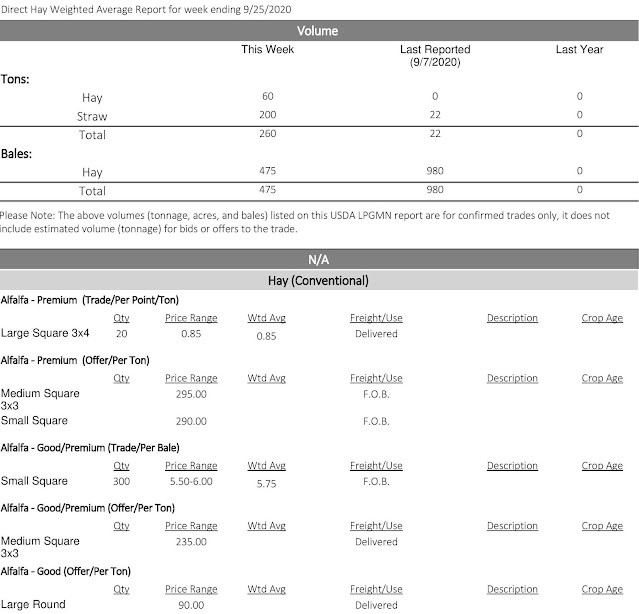Demand and Sales Comments
Dairy quality hay remains in demand and prices are steady with pressure the reduce prices. Lower quality hay prices are declining as is demand. If you need forage or have forage to sell, connect to the Farmer-to-Farmer webpage at http://farmertofarmer.uwex.edu/. You may contact your local county agriculture educator if you need help placing an ad. There is no charge for the service.
Straw prices are for oat, barley, or wheat straw. Straw prices were steady to weaker at the auctions. Quality has a great impact on straw prices. Small square bales averaged $3.75 a bale (range of $3.50 to $6.00). Large square bale straw averaged $44.00 per bale (a range of $25.00 to $75.00). Large round bale straw averaged $44.00 per bale (a range of $32.00 - $65.00).
In Nebraska, all forages sold steady with a $5.00 increased on western side of the state. Demand for hay improved this week. Most hay is moving out of state with a small amount remaining local. In Iowa, prices on all types of hay were mostly steady.
In South Dakota, all classes of hay sold steady this week. There is moderate demand for all classes of hay with the grass hay market very slow. Soybean harvest is moving along.
In Missouri, hay movement remains limited. Demand is light with heavy supplies in the state. Fall harvest is moving forward with corn silage harvest and soybeans coming off the fields.
In Southwest Minnesota, prices were steady with a limited supply of quality hay at the market. In Kansas, hay market trade is incredibly slow. Farmers are very busy with fall harvest in the state.
In Wisconsin, prices are steady too strong for quality hay with good crowd attending the auction. Lower quality hay prices have backed off. Hay market is strong for dairy quality hay.











































